- Benefits of Growing Nigella from Seeds
- Choosing the Right Nigella Variety
- 1. Purpose
- 2. Flower color
- 3. Height
- 4. Soil and climate suitability
- 5. Seed type
- Nigella Sativa: A Powerful Medicinal Herb
- Health Benefits of Nigella Sativa
- How to Use Nigella Sativa
- Precautions
- Conclusion
- Nigella Damascena: A Delicate and Beautiful Flower
- Appearance
- Growing from Seeds
- Types and Varieties
- Uses
- In conclusion
- Nigella Hispanica: A Colorful Addition to Any Garden
- Appearance
- Growing Conditions
- Care
- Uses
- Conclusion
- Tips for Growing Nigella Successfully
- Harvesting and Using Nigella Seeds
- Questions and Answers:
- What is the best way to grow nigella from seeds?
- What are the different types of nigella?
- How long does it take for nigella seeds to germinate?
- Can nigella plants be grown in containers?
- What are some common varieties of Nigella damascena?
- What are the medicinal uses of nigella sativa?
- Videos: Seeds I’m sowing in July!
The captivating beauty and delicate charm of nigella flowers make them a must-have addition to any garden. Also known as Love-in-a-Mist, these exquisite plants are native to Europe and Western Asia, and have been cultivated for centuries for their enchanting blooms and versatile uses.
In this ultimate guide, we will explore everything you need to know about growing nigella from seeds, including the different types and varieties available. Whether you are a seasoned gardener or a beginner, this comprehensive guide will provide you with all the information you need to successfully grow and enjoy these stunning flowers.
Nigella flowers come in a wide range of varieties, each with its own unique characteristics and appeal. From the classic blue nigella to vibrant pink and white varieties, there is a nigella flower to suit every taste and garden style. These flowers are not only visually stunning, but they also attract butterflies and other pollinators, making them a valuable addition to any wildlife garden.
Benefits of Growing Nigella from Seeds
- Cost-effective: Growing nigella from seeds is a cost-effective way to introduce this beautiful flowering plant to your garden. Nigella seeds are relatively inexpensive and can be easily found at garden centers or online.
- Variety of Choices: When you grow nigella from seeds, you have a wide range of choices in terms of varieties and colors. There are various types of nigella available, such as Nigella sativa, Nigella damascena, and Nigella hispanica, each offering its own unique characteristics and beauty.
- Easy Germination: Nigella seeds have a high germination rate and are easy to grow. They can be sown directly in the garden soil or started indoors and transplanted later. With proper care and conditions, nigella seeds will quickly sprout and grow into beautiful plants.
- Quick Blooming: Another advantage of growing nigella from seeds is their relatively short time to bloom. Depending on the variety, nigella plants can start blooming within a few weeks to a couple of months after sowing the seeds. This means you can enjoy their beautiful flowers in your garden relatively quickly.
- Low Maintenance: Nigella plants are known for their low maintenance requirements. They are tolerant of various soil conditions and can adapt to different climates. Once established, nigella plants require minimal attention, making them a hassle-free choice for many gardeners.
- Attracts Beneficial Insects: Nigella flowers are attractive to beneficial insects such as bees and butterflies. By growing nigella in your garden, you can create a pollinator-friendly environment and contribute to the biodiversity of your yard.
- Edible Seeds: In addition to their ornamental value, nigella seeds are also edible and have culinary uses. The seeds have a spicy, nutty flavor and are often used in Indian, Middle Eastern, and Mediterranean cuisines. Growing nigella from seeds allows you to have a fresh and readily available supply of these flavorful seeds.
Overall, growing nigella from seeds is a rewarding experience that offers various benefits, including cost-effectiveness, a wide variety of choices, easy germination, quick blooming, low maintenance, attraction of beneficial insects, and availability of edible seeds.
Choosing the Right Nigella Variety
When it comes to choosing the right nigella variety for your garden, there are several factors to consider. Nigella, also known as love-in-a-mist, is a plant that produces delicate and beautiful flowers. Here are some key considerations to keep in mind:
1. Purpose
First, think about the purpose of growing nigella in your garden. Are you looking to create a colorful display of flowers, or do you want to harvest nigella seeds for culinary purposes? Different nigella varieties are better suited for different purposes.
2. Flower color
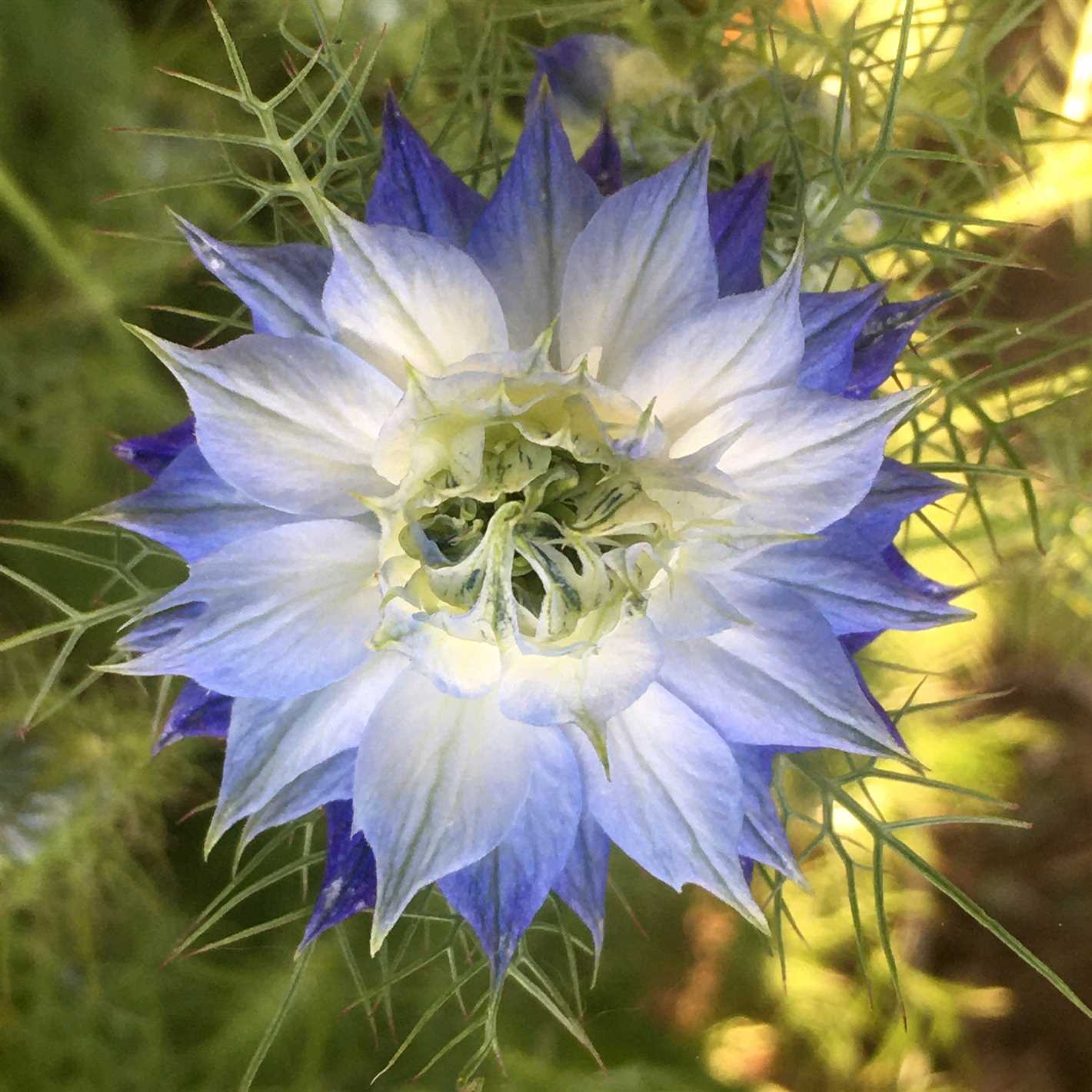
Nigella flowers come in a range of colors, including blue, purple, pink, and white. Consider the color scheme of your garden and choose a nigella variety that complements it well. Alternatively, you can experiment with different colors to create a vibrant and diverse garden.
3. Height
Take into account the height of the nigella variety you choose. Some varieties are compact and low-growing, while others can reach heights of up to 2 feet or more. Consider the overall height of your garden plants to ensure a harmonious and balanced look.
4. Soil and climate suitability
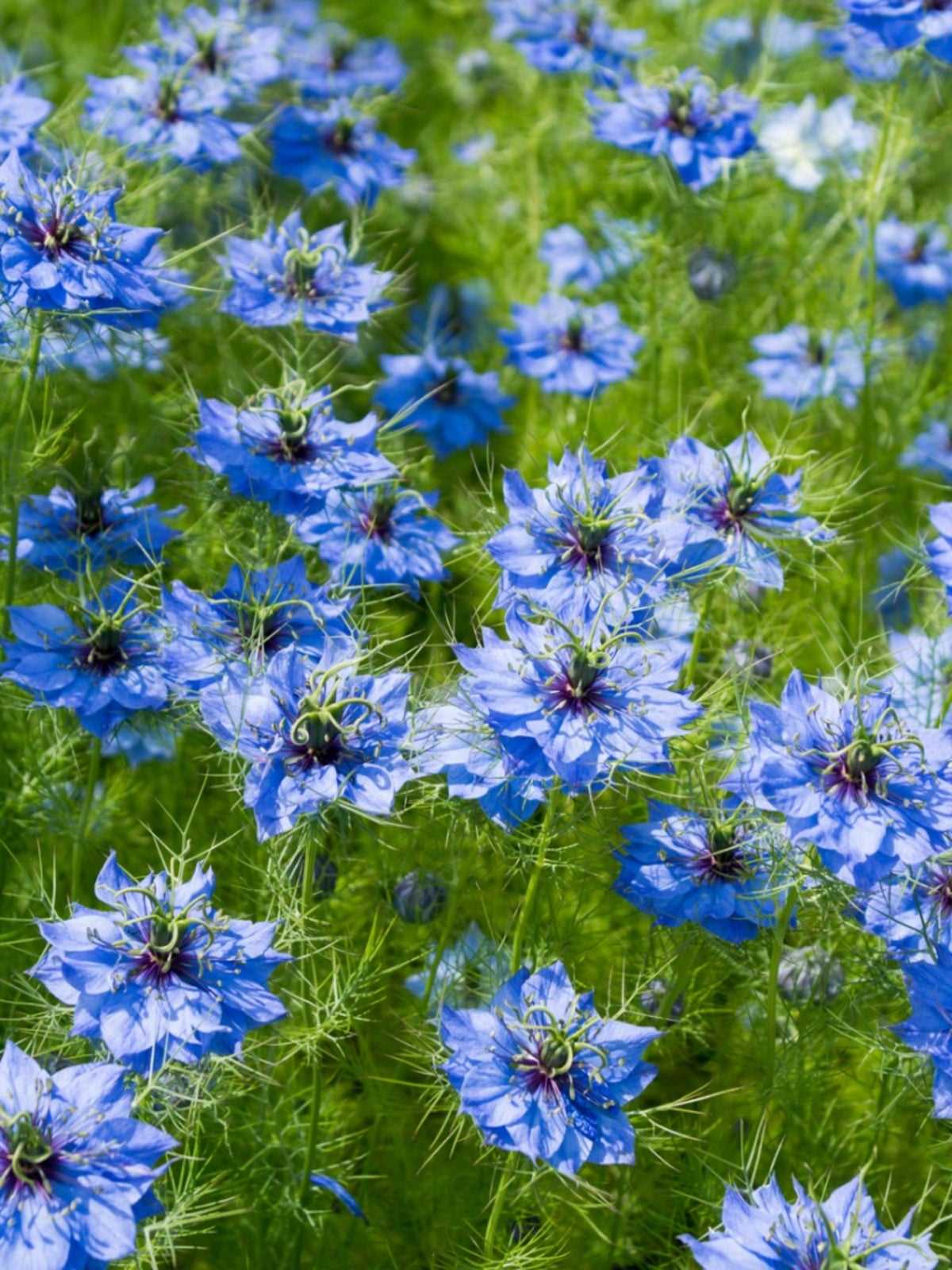
Check the soil and climate requirements of different nigella varieties. Some varieties prefer well-drained soil, while others can tolerate heavier soil types. Consider the climate in your area and choose a variety that is best suited for your specific conditions.
5. Seed type
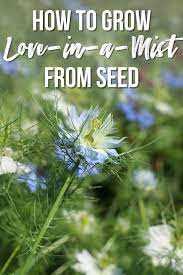
Finally, consider whether you want to grow nigella from seeds or purchase established plants. Growing nigella from seeds can be a rewarding experience, but it requires more time and effort. If you prefer instant gratification, you may opt to buy young nigella plants instead.
By considering these factors, you can choose the right nigella variety that meets your gardening goals and suits your garden’s aesthetic. Whether you’re interested in growing nigella for its beautiful flowers or to harvest its seeds, there’s a variety out there that’s perfect for you.
Nigella Sativa: A Powerful Medicinal Herb
Nigella Sativa, also known as black seed or black cumin, is a versatile and powerful medicinal herb that has been used for centuries in traditional medicine. It is native to southwestern Asia but is now cultivated in many countries around the world.
Health Benefits of Nigella Sativa
Nigella Sativa is rich in antioxidants, vitamins, and minerals, which contribute to its numerous health benefits. Here are some of the main health benefits of using Nigella Sativa:
Boosts immune system: Nigella Sativa has immune-stimulating properties that help strengthen the immune system, making it more effective in fighting off infections and diseases.
Relieves respiratory issues: Nigella Sativa has been traditionally used to treat respiratory conditions such as asthma, bronchitis, and allergies. It has anti-inflammatory and bronchodilatory effects that can help alleviate symptoms and improve lung function.
Supports digestive health: Nigella Sativa has digestive properties that can promote healthy digestion and relieve gastrointestinal issues such as bloating, indigestion, and constipation.
Reduces inflammation: Nigella Sativa contains compounds that have anti-inflammatory effects, which can help reduce inflammation in the body and alleviate symptoms of inflammatory conditions such as arthritis and eczema.
Protects the liver: Nigella Sativa has hepatoprotective properties, meaning it can help protect the liver from damage caused by toxins, medications, and diseases.
How to Use Nigella Sativa
Nigella Sativa can be used in various forms to enjoy its health benefits. Here are some common ways to incorporate Nigella Sativa into your daily routine:
Seeds: Nigella Sativa seeds can be consumed directly by sprinkling them on salads, soups, or yogurt. They have a slightly bitter and nutty flavor.
Oil: Nigella Sativa oil is extracted from the seeds and is commonly used for cooking or as a dietary supplement. It can be added to salads, smoothies, or taken in capsule form.
Ground powder: Nigella Sativa seeds can be ground into a powder and used as a spice in various dishes. It adds a unique flavor and aroma to foods.
Precautions
While Nigella Sativa is generally safe for consumption and has no known serious side effects, it’s always important to consult with a healthcare professional before using any herbal supplement, especially if you have underlying health conditions or are taking medications.
Conclusion
Nigella Sativa is a potent medicinal herb that offers a wide range of health benefits. Whether consumed as seeds, oil, or ground powder, incorporating Nigella Sativa into your daily routine can contribute to overall well-being. However, it’s important to use it responsibly and seek professional advice if needed.
Nigella Damascena: A Delicate and Beautiful Flower
Nigella Damascena, also known as Love-in-a-Mist or Devil-in-the-Bush, is a delicate and beautiful flower that belongs to the Ranunculaceae family. It is native to Southern Europe, North Africa, and Southwest Asia. This annual flowering plant is widely grown for its attractive flowers and unique seed pods.
Appearance

The flowers of Nigella Damascena are typically blue, but you can also find varieties with white, pink, and purple flowers. The petals are surrounded by a cluster of thread-like bracts, giving the appearance of a mist or haze around the flower, hence the name “Love-in-a-Mist”. The flowers are about 1 inch in diameter and have a star-like shape.
Growing from Seeds
Nigella Damascena is easy to grow from seeds. The seeds should be sown directly in the ground after the last frost, as they do not transplant well. The soil should be well-drained and moderately fertile. Sow the seeds about 1/4 inch deep and keep the soil consistently moist until germination, which usually takes around 7 to 14 days. Nigella Damascena prefers full sun to partial shade and can tolerate dry conditions, making it a great choice for xeriscaping.
Types and Varieties
Nigella Damascena comes in many different types and varieties. Some popular varieties include:
- Blue Midget: A dwarf variety with vibrant blue flowers.
- Albion Green Pod: This variety has white flowers and unique green seed pods.
- Miss Jekyll: A tall variety with double flowers in shades of blue, pink, and white.
- Persian Jewels: A mix of various colors, including blue, pink, white, and purple.
Uses
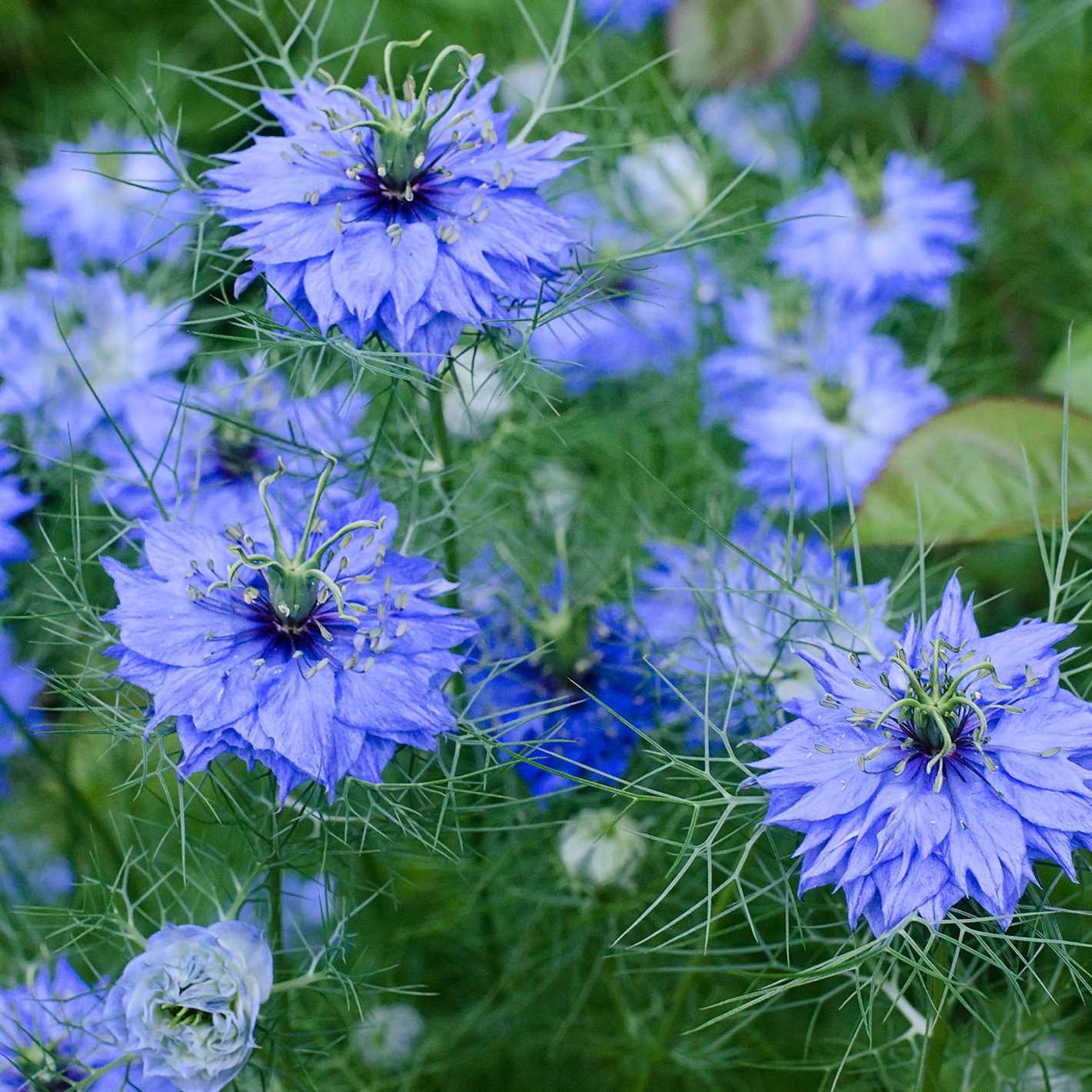
Nigella Damascena is commonly used as a cut flower in floral arrangements due to its unique appearance. The dried seed pods of this flower are also popular in dried flower arrangements. In addition, the seeds of Nigella Damascena are commonly used in baking and cooking, often sprinkled on breads and cakes for added flavor and texture.
In conclusion
Nigella Damascena is a delicate and beautiful flower that can add a touch of elegance to any garden or floral arrangement. It is easy to grow from seeds and comes in various types and varieties. Whether you’re a gardener or a lover of dried flower arrangements, Nigella Damascena is definitely worth considering for its unique beauty and versatility.
Nigella Hispanica: A Colorful Addition to Any Garden
Nigella Hispanica, also known as Spanish Love-in-a-mist, is a beautiful and versatile flower that can add a burst of color to any garden. This annual plant belongs to the Ranunculaceae family and is native to the Mediterranean region.
Appearance
Nigella Hispanica grows to a height of about 12-24 inches. It has feathery leaves and delicate, intricate flowers that come in a variety of vibrant colors, including shades of blue, purple, pink, and white. The flowers are known for their unique shape, with a prominent central column surrounded by a ring of petals.
Growing Conditions
Nigella Hispanica is a hardy plant that thrives in well-drained soil and full sun. It is quite adaptable and can tolerate a range of conditions, including dry spells and poor soil quality. It is best to sow the seeds directly into the ground in early spring or late summer.
Care
Once the seeds are sown, ensure that the soil is kept moist until germination occurs. Nigella Hispanica self-sows easily, so you may find that it pops up in unexpected places in your garden. Deadheading the flowers will prolong the blooming period, and removing the seed pods before they ripen will help control self-seeding.
Uses
Nigella Hispanica is a popular choice for borders, rock gardens, and cottage-style gardens. Its vibrant colors and unique flowers make it a standout feature in any landscape. Additionally, the dried seed pods can be used in floral arrangements, adding an interesting and textural element.
Conclusion
If you’re looking to add a splash of color to your garden, consider planting Nigella Hispanica. With its stunning flowers and easy care requirements, it is sure to be a wonderful addition to any outdoor space. Whether you choose to showcase it in a border or use it as a cut flower, Nigella Hispanica is bound to impress.
Tips for Growing Nigella Successfully
- Choose the right location: Nigella plants prefer full sun but can tolerate partial shade. Make sure to choose a spot in your garden that gets at least 6 hours of direct sunlight each day.
- Prepare the soil: Nigella plants prefer well-draining soil that is rich in organic matter. Before planting, amend the soil with compost or well-rotted manure to improve its fertility and drainage.
- Sow the seeds: Nigella seeds can be sown directly into the ground in early spring, as soon as the soil can be worked. Alternatively, you can start them indoors 4-6 weeks before the last expected frost date and transplant them outdoors once the soil has warmed up.
- Water regularly: Nigella plants require regular watering, especially during dry periods. Keep the soil evenly moist, but avoid overwatering, as it can lead to root rot.
- Provide support: Nigella plants can grow up to 2 feet tall and may require some support to prevent them from flopping over. You can use stakes or cages to provide support as needed.
- Deadhead the flowers: To encourage continuous blooming, remove faded flowers by deadheading. This will also prevent the plants from self-sowing and becoming invasive.
- Protect from pests: Nigella plants are generally pest-resistant, but they can be susceptible to aphids and spider mites. Monitor your plants regularly and take appropriate measures, such as spraying with insecticidal soap or using natural predators, to control pest infestations.
- Harvest the seeds: Nigella seeds can be harvested once the seed pods turn brown and dry. Cut the stems with seed pods and hang them upside down in a cool, dry place to allow the pods to fully dry. Once dry, gently shake the pods to release the seeds.
- Store the seeds: Store the harvested Nigella seeds in a cool, dry place in airtight containers. They can remain viable for up to 3 years.
Harvesting and Using Nigella Seeds
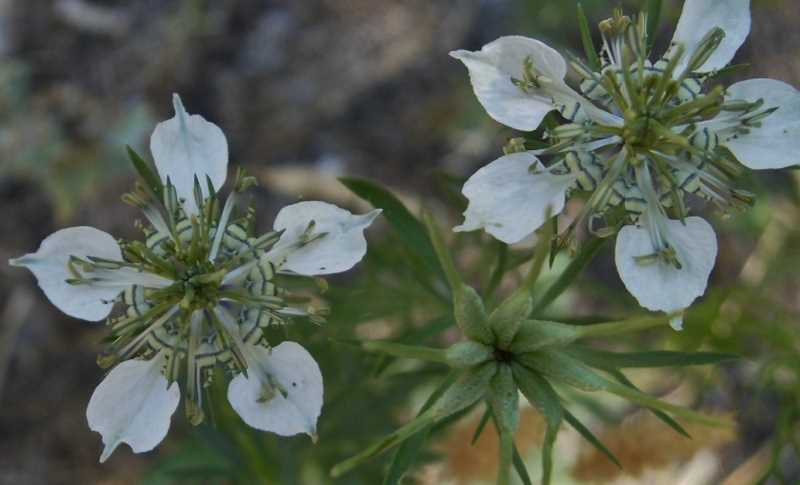
Once your nigella plants have reached maturity and their seedpods have dried and turned brown, it’s time to harvest the seeds. Here is a step-by-step guide on how to harvest and use nigella seeds:
- Begin by cutting the nigella seedpods from the plant using a pair of scissors or pruners. Make sure to cut the seedpods when they are fully mature and dry to ensure the seeds are fully developed.
- Place the harvested seedpods in a paper bag or a clean, dry container. Leave them in a cool and dry place for a week or two to allow the seedpods to further dry out.
- After the seedpods have dried, gently crush them using your hands or a mortar and pestle. This will release the small nigella seeds from the seedpods.
- Using a sieve or a fine mesh strainer, separate the seed debris from the nigella seeds. Discard any damaged or discolored seeds.
- If desired, you can store the nigella seeds in an airtight container, such as a glass jar or a plastic bag, in a cool and dark place. This will help extend their shelf life.
Nigella seeds have a unique flavor that is often described as peppery and slightly nutty. They can be used in a variety of dishes and cuisines. Here are some ways you can use nigella seeds:
- Sprinkle nigella seeds on top of breads, buns, and rolls before baking to add a crunchy texture and a hint of flavor.
- Add nigella seeds to salad dressings for an extra burst of flavor.
- Use nigella seeds in spice blends, such as curry powders and garam masala, to enhance the flavor of your dishes.
- Toast nigella seeds in a dry skillet before using them in recipes to intensify their flavor.
- Incorporate nigella seeds into marinades for meats and vegetables to add a unique taste.
Experiment with nigella seeds in your cooking to discover new flavors and combinations. With their versatility and distinct taste, nigella seeds can enhance the flavors of a wide range of dishes.
Questions and Answers:
What is the best way to grow nigella from seeds?
The best way to grow nigella from seeds is to sow them directly in the garden in early spring, as nigella plants do not transplant well. Prepare the soil by loosening it with a garden fork, then sprinkle the seeds on the soil surface and lightly press them in. Keep the soil consistently moist until the seeds germinate, which usually takes about 10-14 days. Thin the nigella seedlings to a spacing of 10-12 inches once they have two sets of true leaves.
What are the different types of nigella?
There are several types of nigella, including Nigella damascena (commonly known as Love-in-a-Mist), Nigella sativa (commonly known as black cumin or black seed), and Nigella hispanica (commonly known as Spanish nigella or fennel flower). Each type has its own distinct characteristics and uses.
How long does it take for nigella seeds to germinate?
Nigella seeds typically take about 10-14 days to germinate. However, the germination time can vary depending on factors such as temperature and moisture levels. It is important to keep the soil consistently moist during the germination period to ensure successful seedling emergence.
Can nigella plants be grown in containers?
Yes, nigella plants can be grown in containers. When growing nigella in containers, choose a pot that is at least 8 inches deep and has good drainage. Fill the pot with well-draining potting soil and sow the nigella seeds directly into the soil. Place the container in a sunny location and keep the soil consistently moist. Nigella plants grown in containers may require more frequent watering than those grown in the ground.
What are some common varieties of Nigella damascena?
Some common varieties of Nigella damascena include ‘Miss Jekyll’ (which has double blue flowers), ‘Persian Jewels’ (which has a mix of blue, pink, and white flowers), and ‘Albion Green Pod’ (which has green seed pods instead of the typical brown ones). These varieties offer a range of colors and forms to choose from when growing Nigella damascena.
What are the medicinal uses of nigella sativa?
Nigella sativa, also known as black cumin or black seed, has a long history of medicinal use. It is believed to have various health benefits, including anti-inflammatory properties, immune system support, and potential anticancer effects. Nigella sativa oil is often used as a natural remedy for conditions such as asthma, allergies, and digestive disorders. However, it is important to consult a healthcare professional before using nigella sativa for medicinal purposes.







